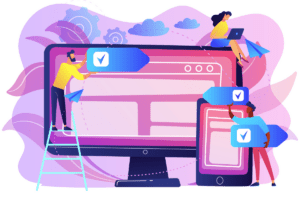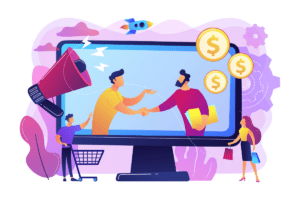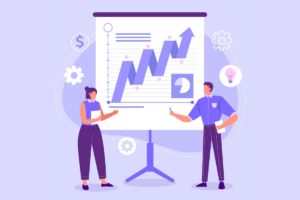Sales can feel overwhelming. There are always more leads, more emails, and more calls than there’s time for. What if you had a way to know where to focus first, which prospects matter most, and how to make every conversation count? AI can help. It doesn’t replace your skills, it makes your job easier, giving you insights and freeing up time to do what you do best: sell. Keep reading to learn more about the best tips, strategies, and tools to implement AI in sales cycles.
Why AI Matters for Sales Professionals
Sales has always been about timing, relationships, and understanding customer needs. What has changed is the sheer amount of information that buyers leave behind during their interactions with businesses. Every website visit, email response, social media like, and live chat conversation adds to the growing pool of data. The challenge is that no human can manually process this much information in a meaningful way without assistance.
Turning Data into Decisions
This is where AI becomes essential. By analyzing huge volumes of data, AI systems can highlight patterns that would otherwise go unnoticed. For example, a sales team might discover that leads from a certain industry consistently convert at a higher rate when contacted within 24 hours of visiting the website. Without AI, it would take months of trial and error to uncover this insight, if it was discovered at all. With AI, these patterns are flagged automatically and shared directly with the team.

Practical Tips for Using AI in Sales
Now that you know why AI is important, let’s go over some AI implementation tips.
Start Small and Build
The first step to adopting AI successfully is to avoid overwhelming your team. Many sales teams stumble because they attempt to roll out too many new tools at once, expecting immediate results. A better approach is to identify a single challenge that AI could help solve and focus your efforts there. For sales teams in particular, they need to see the value before they get on board with a new technology.
Clean and Consistent Data Matters
No matter how advanced the AI system, it can only produce insights based on the information it is given. If your CRM is filled with duplicate contacts, outdated phone numbers, or missing email addresses, you cannot expect accurate predictions or recommendations. That’s why one of the most valuable investments a sales team can make is a thorough data clean-up before introducing AI. Standardizing data entry, eliminating duplicates, and ensuring that records are regularly updated will set a strong foundation. Once your database is reliable, AI has the opportunity to deliver far more accurate and actionable insights.
Use AI as a Partner, Not a Replacement
There is often a misconception that AI is designed to replace human salespeople. In reality, the best use of AI is as a supportive partner. It can handle repetitive or time-consuming tasks, but it cannot replace empathy, creativity, or the ability to build trust with another person. For example, a lead scoring system might flag that a certain account is likely to close soon, but it is still the salesperson’s responsibility to reach out, listen, and guide the buyer through the final steps.
Training and Experimentation
Like any skill, using AI effectively requires practice. Sales teams benefit from structured training sessions where they can explore new tools in a hands-on way. Many platforms offer demo accounts or trial versions, which give salespeople the chance to experiment without pressure. This trial period can be extremely valuable for discovering which features actually support their workflow and which are less relevant.
Building a Culture of Continuous Learning
Sales teams that succeed with AI are often those that embrace experimentation and knowledge sharing. When salespeople are encouraged to share what works, what doesn’t, and what could be improved, the whole team benefits. This kind of collaborative learning prevents frustration and accelerates adoption. It is also worth remembering that AI tools evolve quickly. Features that were considered cutting-edge a year ago may already be standard today. A culture of ongoing learning ensures that sales teams remain up to date and continue extracting maximum value from their software.

Strategies for Getting the Most Out of AI
Let’s go over more of a strategic approach to implementing AI as a sales team.
Combine Analytics with Intuition
One of the strongest strategies for using AI in sales is to combine its analytical capabilities with the intuition that comes from years of experience. AI is exceptional at identifying patterns in behavior, such as which industries respond best to a certain pitch or which customer segments have shorter sales cycles. But while the data can suggest a path forward, it often takes human interpretation to turn those suggestions into effective actions.
Personalize Outreach at Scale
Buyers expect a level of personalization that generic outreach simply cannot deliver. In fact, personalized subject lines can increase open rates by up to 26%. And, this is just one example of personalization. The challenge is scaling this personalization without requiring salespeople to spend hours tailoring every message.
AI makes this possible. By analyzing data points such as website activity, social media engagement, and CRM records, AI can help craft highly targeted messages. If a prospect has recently spent time on a pricing page, the system can prompt the salesperson to reach out with a message that addresses return on investment. If another lead downloaded a case study, the system might suggest a follow-up that highlights similar customer success stories. This approach makes the buyer feel understood, while also allowing salespeople to manage more conversations at once.
Shorten The Sales Cycle
Sales cycles can drag on because of administrative bottlenecks. Scheduling meetings, logging interactions, and following up with reminders can take up valuable time. AI tools can automate much of this, keeping opportunities moving forward without unnecessary delays. For example, AI scheduling assistants can automatically find mutually available times for meetings without the usual back-and-forth emails. Smart CRMs like HubSpot can log calls, update records, and trigger reminders without requiring manual input. Over the course of a month, the time saved can easily add up to hours or even days, which salespeople can reinvest into building stronger relationships with prospects.
AI-Powered Sales Tools and Software
Now that you’re familiar with tips and strategies for successful AI in sales, let’s go over the tools that can make all of these happen.
Visitor Queue
One of the biggest challenges salespeople face is knowing which companies are showing interest in their products or services. Visitor Queue solves this by identifying the businesses visiting your website, even if no forms are submitted. This means your sales team can see which organizations are actively researching you, what pages they’re engaging with, and how long they stay. For example, if a manufacturing company spends time on your pricing page, you can use that insight to prioritize outreach and start conversations at exactly the right time. Instead of relying on cold calls, your team is now working with warm leads who have already demonstrated intent.

Salesforce Einstein
CRMs have long been essential to sales, but they often required manual work and guesswork. Salesforce Einstein adds AI-powered predictive intelligence directly into the Salesforce platform. It can score leads based on likelihood to convert, recommend the next best action, and even forecast which deals are most likely to close. For example, if a rep has 20 leads in their pipeline, Einstein might highlight that five of them show strong engagement signals and should be prioritized. This eliminates wasted effort and keeps sales teams focused on the opportunities that drive results.

HubSpot Sales Hub
HubSpot Sales Hub takes CRM functionality further by automating many of the repetitive tasks salespeople face. Its AI features can create personalized email sequences, schedule follow-ups, and update records automatically. For instance, if a prospect opens an email but doesn’t respond, HubSpot can schedule a reminder for the rep to call that lead the next day. This ensures no opportunity is forgotten and helps maintain consistent communication throughout the buyer journey.

Outreach.io
Outreach makes the email process smarter by analyzing prospect behavior to determine the best times to send emails and the most effective follow-up sequences. For example, if data shows that a specific lead engages most with emails sent on Wednesday mornings, Outreach.io can adjust the cadence accordingly. This level of personalization improves response rates and ensures that salespeople spend less time experimenting and more time closing deals.
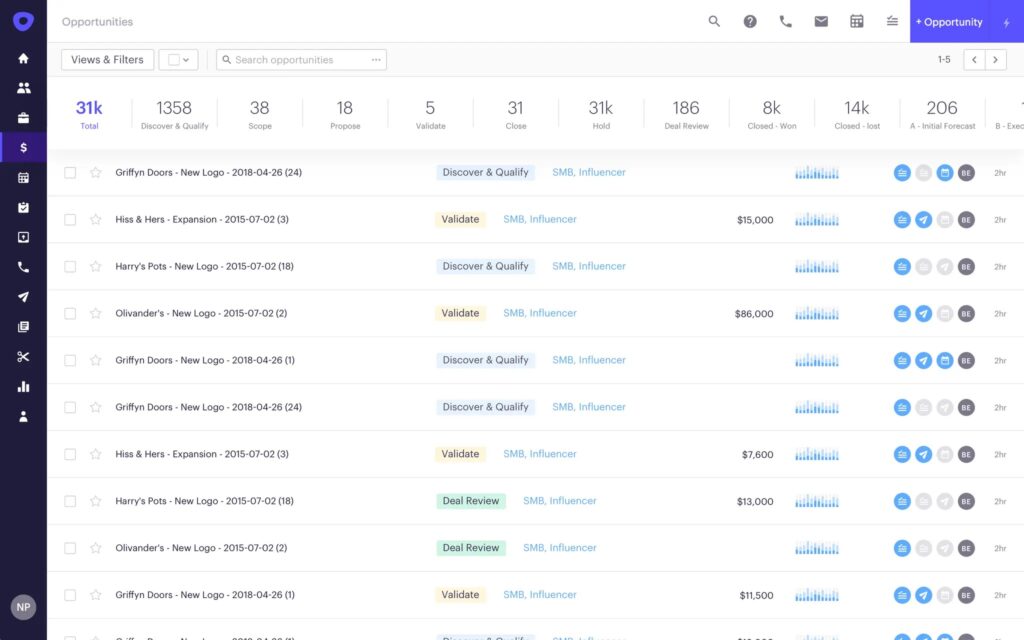
Lavender
Even with the right timing and cadence, the quality of an email itself determines whether a prospect engages. Lavender can help assist with writing sales emails, including subject lines, tone, length, and clarity, providing suggestions for improvement based on previous success. For example, if a rep writes a subject line that’s too generic, Lavender might suggest a more personalized option that includes the prospect’s industry or pain point. Over time, this results in consistently higher-quality emails that feel more human and compelling.
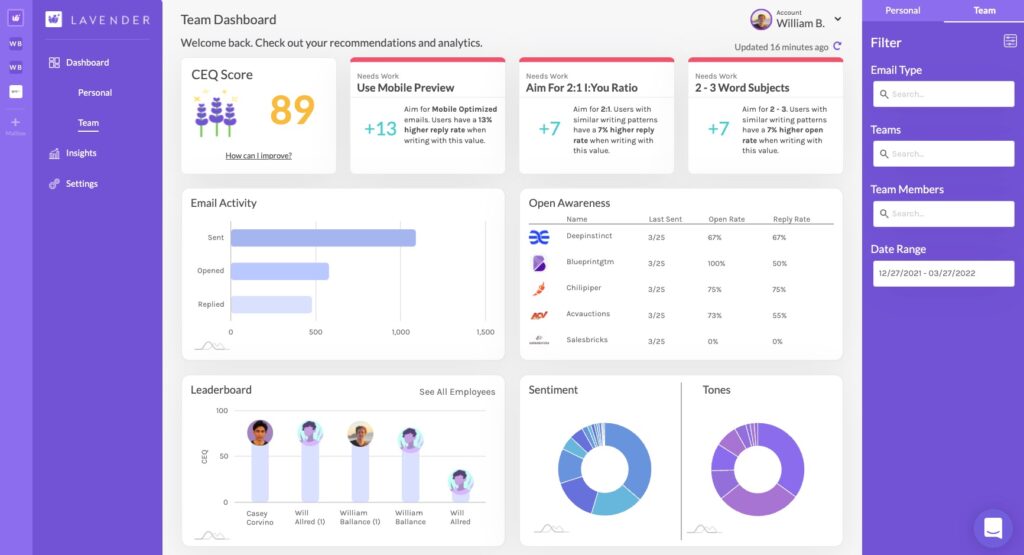
Gong
Sales calls are one of the most valuable sources of insight, and Gong leverages AI to analyze them. It records and transcribes conversations, then highlights patterns such as common objections, competitor mentions, and talk-to-listen ratios. For example, if a rep spends too much time talking instead of listening, Gong will flag it and provide coaching tips. Sales managers can then use this information to train their teams more effectively, improving performance across the board.
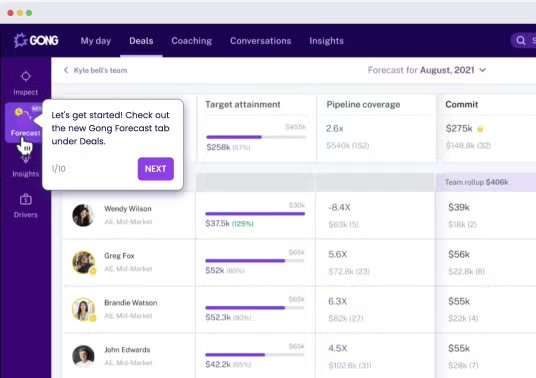
Clari
Forecasting has always been tricky for sales teams, but Clari brings accuracy to the process by using machine learning. It examines pipeline data, historical performance, and engagement signals to predict which deals will close and when. If a deal looks strong on paper but hasn’t had any recent activity, Clari will adjust its forecast downward, preventing surprises at the end of the quarter.
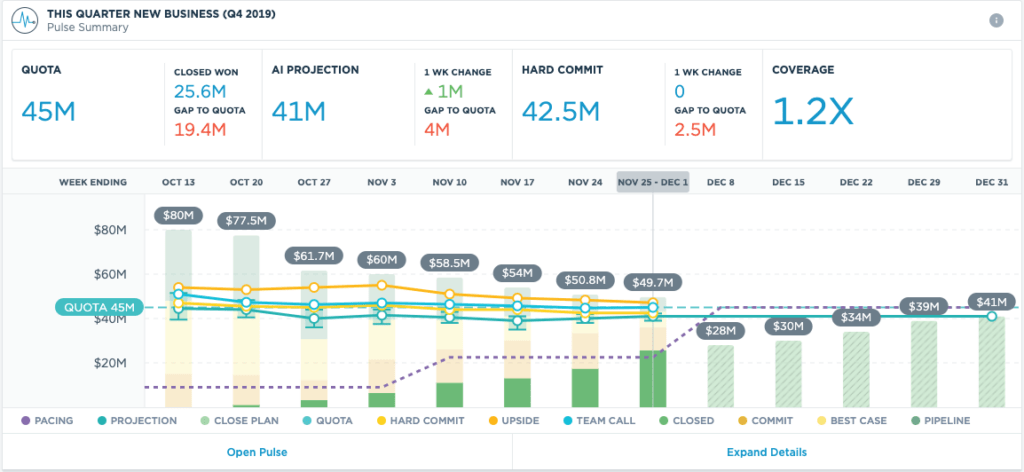
What’s Next?
AI in sales is not about removing people from the equation. It is about giving them the tools to work more efficiently, make better decisions, and deliver greater value to customers. By starting small, cleaning up data, and using AI as a supportive partner, sales teams can increase productivity without being overwhelmed. If you have any questions about using Visitor Queue to identify your website visitors, do not hesitate to reach out.
 Identify
Identify Personalize
Personalize Benchmark
Benchmark Agencies
Agencies Integrations
Integrations Case Studies
Case Studies Use Cases
Use Cases Blog
Blog Resources
Resources

